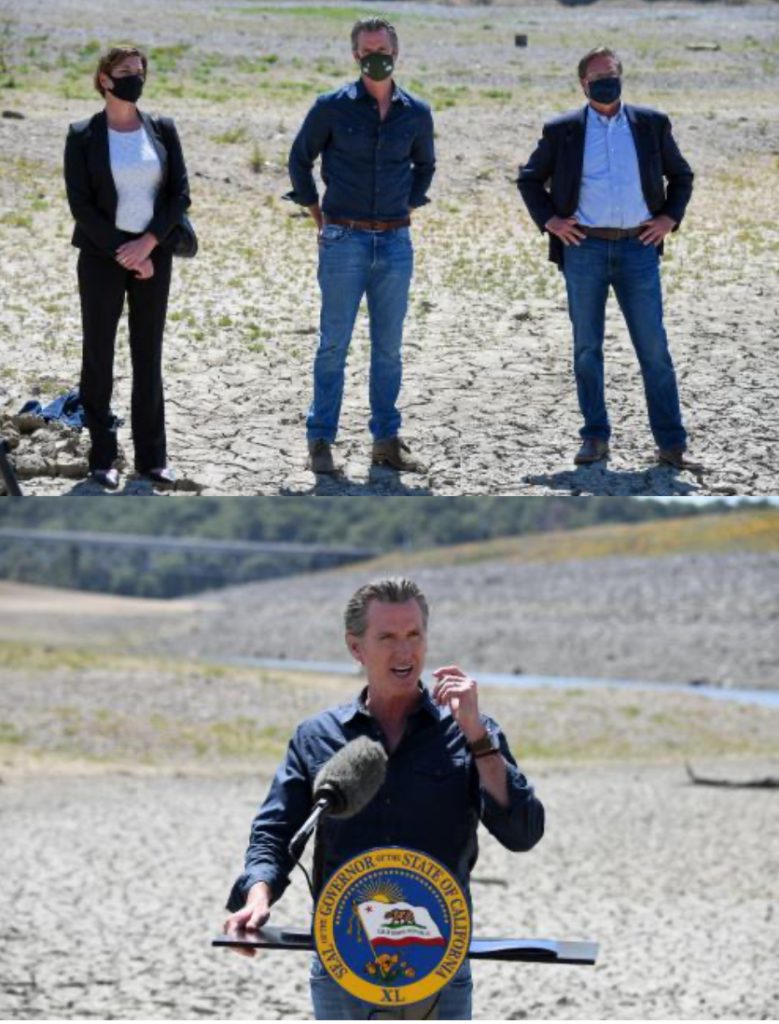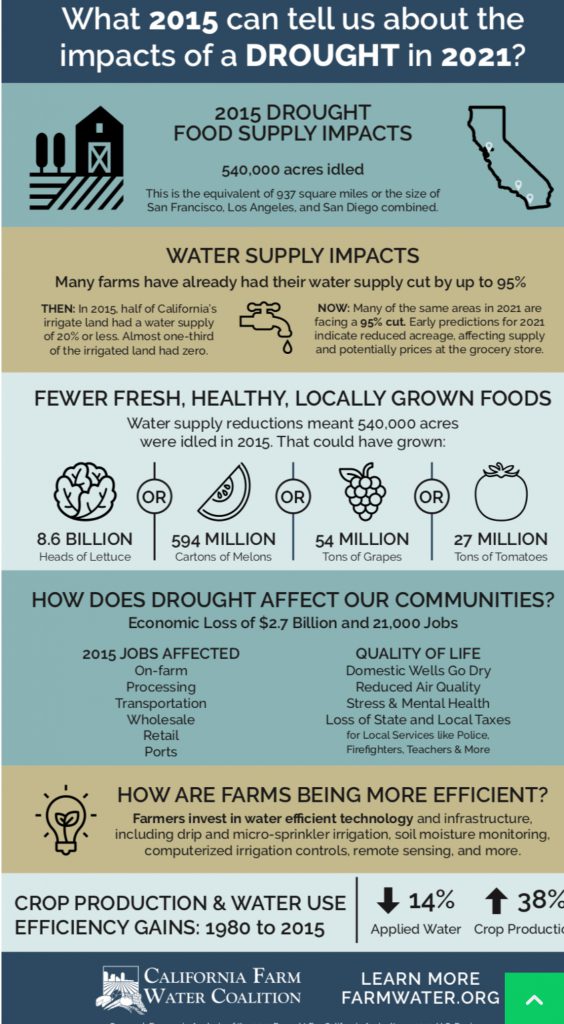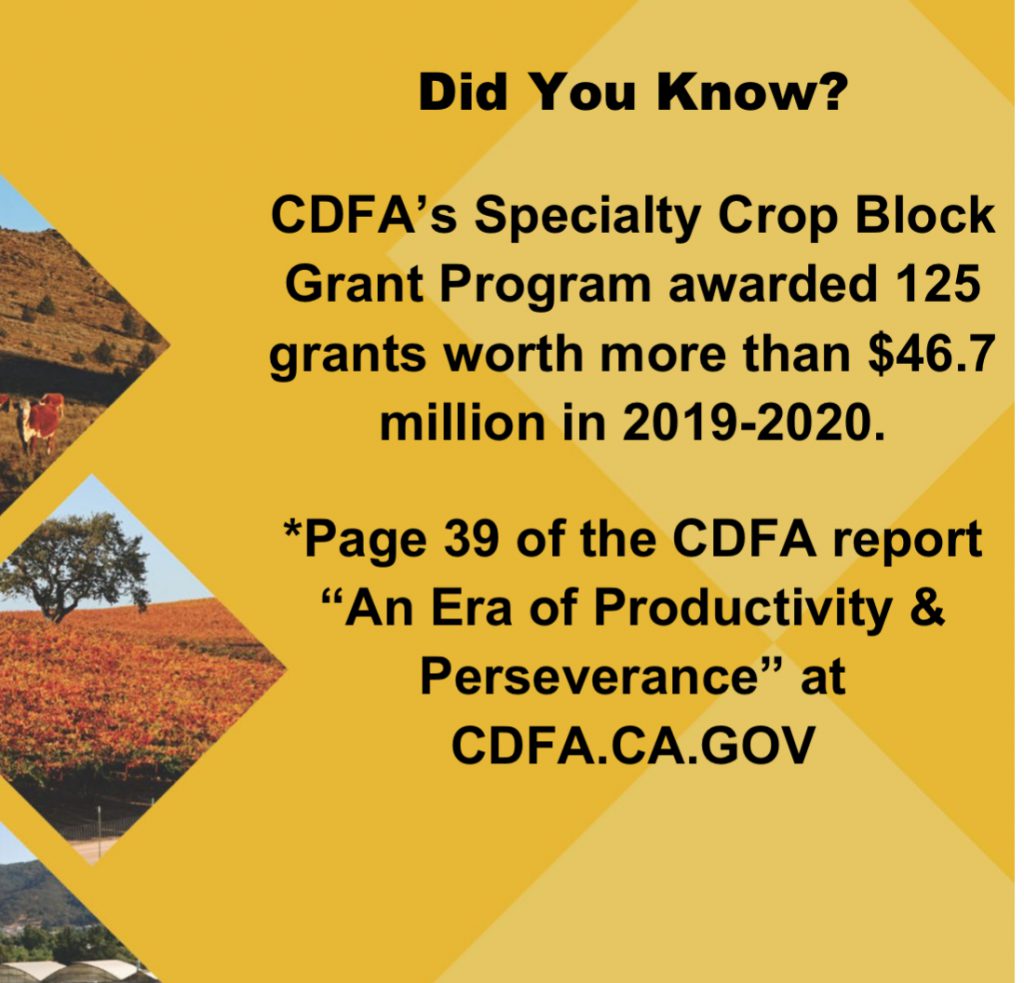By CDFA Secretary Karen Ross
As we observe Earth Day 2021 and look forward to a time in the not-so-distant future when we start to come together again after a very long year-plus apart, I want to take a moment to express my gratitude for everything that farmers and ranchers have done during this stressful period to further the causes of environmental stewardship and climate-smart agricultural practices. It’s important to understand that they have achieved this while never wavering from their essential purpose of providing food for a hungry world.
Throughout the COVID-19 crisis, California’s Climate Smart Agriculture programs have continued to draw extensive interest from producers. CDFA’s Healthy Soils Program, which incentivizes practices to increase soil sustainability by sequestering carbon, has received $50 million in appropriations, so far, and there is another $30 million proposed in Governor Newsom’s budget for 2021-2022. The funded projects to date are estimated to reduce greenhouse gases (GHGs) in the atmosphere by more than 112,000 metric tons per year. Co-benefits include increased water holding capacity for drought resilience, biodiversity enhancements, and improved nutrient cycling.
Dairy families are leaning-in on sustainability and methane reduction through our manure management programs, with the objectives of turning dairy waste streams into renewable energy and improving air and water quality. More than $318 million has been appropriated to these programs, so far, with a reduction of 2.3 million metric tons of GHGs per year – the equivalent of removing 495,000 cars from the road!
The State Water Efficiency and Enhancement Program (SWEEP) has invested $80 million to support farmers implementation of improved irrigation practices to conserve water and energy to reduce GHG emissions – more than 800,000 metric tons over a 10 year period along with annual water savings of 107,000 acre-feet, and all that also results in improved nutrient management! Recognizing the importance of this program, Governor Newsom’s budget has proposed $40 million for it.
Natural and working lands are key assets to helping California reach its climate goals. Governor Newsom underscored the state’s commitment with an executive order last fall calling for the development of innovative strategies for California lands to address climate change as well as protect and restore biodiversity and our ecosystems. He called on CDFA to work with agricultural stakeholders to identify farmer and rancher-led solutions. We followed that up with a series of public meetings to solicit ideas and the draft report summarizing those sessions is now out for public comment, with a deadline for comments of April 30, 2021. It is important that we listen to farmers and ranchers who are agents of change and managers of the biological system of farming as we focus on balanced policy, incentives, and technical assistance that best support and reward these land stewards for the common public good.
As we transition to a carbon-neutral economy and a more sustainable and resilient food and agriculture system, we must invest in more nature-based solutions to benefit Mother Earth. That’s why I was so excited for CDFA to join our colleagues from USDA Natural Resource Conservation Service and more than 20 other farm and non-governmental organizations in the recently announced California Pollinator Coalition to focus on increasing the value working lands provide to our environment. The member organizations represent the large majority of California’s crop and rangeland, and they’re pledging to increase habitat for pollinators on working lands. Achieving this goal will increase biodiversity and sequester more carbon in soil. California is home to more than 1,600 native bees and hundreds of other species of pollinators. Globally, pollinators provide service to more than 180,000 different plant species, more than 1,200 crops, and are responsible for producing an estimated one out of every three bites of food.
And that leads us to the whole point of observing Earth Day and beyond that, treating every day like Earth Day – we must take care of our planet so it may take care of us, and our farmers and ranchers can and will lead the way.








